
Laoag City: The Gateway to the North
Discover Laoag City: A blend of rich history, stunning landscapes, and mouth-watering cuisine in the heart of Ilocos Norte.
Laoag City, the capital of Ilocos Norte, is a vibrant hub of culture, history, and natural beauty. As you wander through its streets, you'll discover a blend of Spanish colonial architecture, traditional Filipino homes, and modern establishments. The famous Sinking Bell Tower, which has gradually sunk into the ground over the centuries, serves as a historical landmark and a testament to the city's rich past. For those interested in history, the Museo Ilocos Norte offers an insightful journey into the region's heritage, showcasing artifacts, traditional garments, and historical documents. Nearby, the St. William's Cathedral stands as a beautiful example of Baroque architecture and a serene place for reflection. Nature lovers will find plenty of reasons to explore Laoag. The La Paz Sand Dunes offer a unique desert experience, perfect for thrilling activities like sandboarding and 4x4 rides. The scenic views from the top of the dunes are breathtaking, especially at sunset. Additionally, the panoramic vistas and cool breeze at the Paoay Lake provide a relaxing escape from the city's hustle and bustle. Laoag City is also a culinary haven. Street food vendors and local eateries serve up delicious Ilocano dishes like empanadas, bagnet, and longganisa. Don't miss the chance to taste these regional specialties, which reflect the area's agricultural abundance and culinary traditions.
Local tips in Laoag City
- Visit the Sinking Bell Tower early in the morning to avoid the crowds and capture stunning photos.
- Bring sun protection and water when visiting the La Paz Sand Dunes; the area can get quite hot during the day.
- Try local delicacies at small eateries and street food stalls for an authentic Ilocano culinary experience.
- Wear comfortable shoes as you will be doing a lot of walking while exploring historical sites and natural attractions.
Laoag City: The Gateway to the North
Laoag City, the capital of Ilocos Norte, is a vibrant hub of culture, history, and natural beauty. As you wander through its streets, you'll discover a blend of Spanish colonial architecture, traditional Filipino homes, and modern establishments. The famous Sinking Bell Tower, which has gradually sunk into the ground over the centuries, serves as a historical landmark and a testament to the city's rich past. For those interested in history, the Museo Ilocos Norte offers an insightful journey into the region's heritage, showcasing artifacts, traditional garments, and historical documents. Nearby, the St. William's Cathedral stands as a beautiful example of Baroque architecture and a serene place for reflection. Nature lovers will find plenty of reasons to explore Laoag. The La Paz Sand Dunes offer a unique desert experience, perfect for thrilling activities like sandboarding and 4x4 rides. The scenic views from the top of the dunes are breathtaking, especially at sunset. Additionally, the panoramic vistas and cool breeze at the Paoay Lake provide a relaxing escape from the city's hustle and bustle. Laoag City is also a culinary haven. Street food vendors and local eateries serve up delicious Ilocano dishes like empanadas, bagnet, and longganisa. Don't miss the chance to taste these regional specialties, which reflect the area's agricultural abundance and culinary traditions.
Iconic landmarks you can’t miss
Malacañang of the North
Explore Malacañang of the North to uncover the rich history and culture of the Philippines through the legacy of former President Ferdinand Marcos.
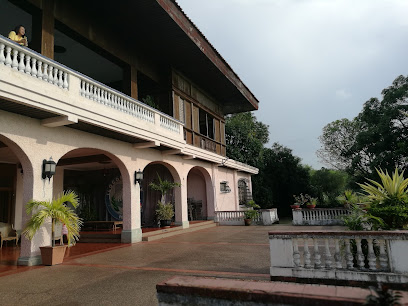
Sinking Bell Tower
Experience the charm of Laoag's Sinking Bell Tower, a historical landmark that tells tales of the past amidst stunning architecture.

Aurora Park
Discover the tranquility of Aurora Park in Laoag City, a perfect escape for relaxation, picnics, and enjoying nature's beauty.

Saint William’s Cathedral (Diocese of Laoag)
Discover the architectural beauty and spiritual serenity of Saint William's Cathedral, a must-visit destination in Laoag City, Ilocos Norte.

Museo Ilocos Norte
Explore the cultural heritage of Ilocos at Museo Ilocos Norte, where history comes alive through engaging ethnographic displays and artifacts.

Rizal Amusement Park
Experience the thrill of rides and the beauty of nature at Rizal Amusement Park, a must-visit for families in Laoag City.

Abolition of Tobacco Monopoly Monument
Discover the Abolition of Tobacco Monopoly Monument in Laoag City, a historical landmark celebrating local heritage and the fight for farmer's rights.

Laoag City Welcome Arch
Discover the rich history and vibrant culture of Laoag City at the stunning Welcome Arch, a must-visit landmark for every traveler.

Ferdinand Marcos
Explore the Ferdinand Marcos Monument in Rizal Park, a pivotal site that reflects the complex history and politics of the Philippines.

lake view paoay
Experience the serene beauty and historical richness of Lake View Paoay, a breathtaking landmark in Ilocos Norte, Philippines.

Unmissable attractions to see
Malacañang of the North
Explore Malacañang of the North, a historical museum in Paoay, Ilocos Norte, that offers a glimpse into the rich heritage of the Philippines.
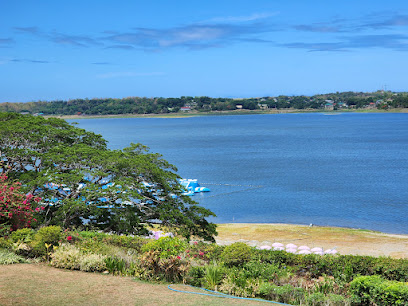
Paoay Sand Dunes Adventures (Suba)
Explore the stunning Paoay Sand Dunes in Ilocos Norte for exhilarating sandboarding, thrilling 4x4 rides, and breathtaking sunset views.

Sinking Bell Tower
Explore the Sinking Bell Tower, an iconic historical landmark in Laoag City showcasing rich heritage and unique architectural charm.

Aurora Park
Experience the beauty and tranquility of Aurora Park in Laoag City, a perfect escape for nature lovers and families alike.

Saint William’s Cathedral (Diocese of Laoag)
Explore the historic Saint William's Cathedral in Laoag City, a stunning example of Baroque architecture and a center of Catholic faith in the Philippines.

Museo Ilocos Norte
Explore the vibrant history and culture of Ilocos Norte at Museo Ilocos Norte, a must-see destination for all tourists.

Rizal Amusement Park
Experience family fun and cultural charm at Rizal Amusement Park in Laoag City, where excitement meets relaxation amidst lush greenery.

Sand Dunes View Deck
Experience the breathtaking beauty of the Sand Dunes View Deck in Laoag City, Ilocos Norte, a perfect blend of adventure and stunning views.

Laoag Sand Dunes Recreation
Explore the stunning Laoag Sand Dunes Recreation, where adventure meets natural beauty in the heart of Ilocos Norte.

Ilocos Sand Adventures
Experience the thrill of sandboarding and ATV rides at Ilocos Sand Adventures, a breathtaking destination in Laoag City, Ilocos Norte.

Essential places to dine
Kamalig Garden Grill & Restaurant
Experience authentic Filipino cuisine in a charming garden setting at Kamalig Garden Grill & Restaurant in Laoag City.

Cuisine de Iloco Restaurant
Experience the essence of Filipino cuisine at Cuisine de Iloco Restaurant in Laoag City - where every dish tells a story.

Chicken Ati-Atihan
Experience authentic Filipino cuisine at Chicken Ati-Atihan, where every dish tells a story of Ilocano heritage and flavor.

Eagles' Nest Bar and Restaurant
Discover authentic Filipino flavors at Eagles' Nest Bar and Restaurant in Laoag City—your culinary gateway to the heart of Ilocos Norte.

Vis-a-vis Lounge Laoag
Experience delightful local flavors at Vis-a-vis Lounge in Laoag City - where culinary tradition meets modern comfort.

Golden Cow Restaurant
Experience authentic Filipino flavors at Golden Cow Restaurant in Laoag City—where tradition meets taste.

El Comedor Restaurant
Discover the essence of Filipino cuisine at El Comedor Restaurant in Laoag City - where tradition meets taste.

The Palacio de Laoag Restaurant
Experience authentic Filipino cuisine at The Palacio de Laoag Restaurant, where traditional flavors meet warm hospitality in Laoag City.

CASA G RESTAURANT BAR CAFE
Experience authentic Filipino cuisine at CASA G Restaurant Bar Cafe in Laoag City – where taste meets tradition in every dish.

Restaurant
Discover the rich culinary heritage of Laoag City through its diverse dining options and authentic Ilocano flavors.

Markets, malls and hidden boutiques
Puregold Laoag
Discover an array of retail options at Puregold Laoag, a vibrant shopping mall in the heart of Ilocos Norte, perfect for tourists looking for a unique experience.

Laoag Public Market
Discover the vibrant culture and flavors of Ilocos Norte at Laoag Public Market, a hub of local goods and culinary delights.

Savemore Market Laoag 1
Experience the best of local shopping at Savemore Market Laoag, where fresh produce and unique finds await in the heart of Ilocos Norte.

Unitop Laoag
Discover a unique shopping experience at Unitop Laoag, where diverse products meet local flair in Ilocos Norte.
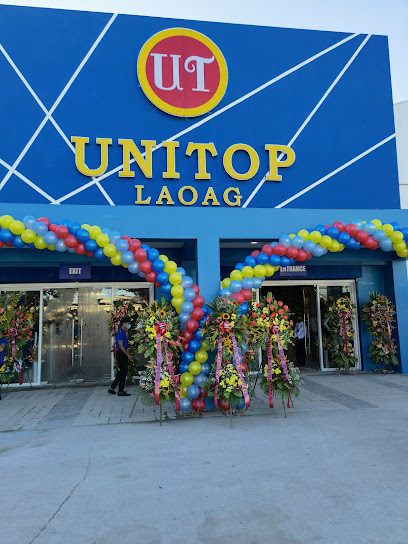
ME SHOPPING CENTER
Explore ME Shopping Center in Laoag City for a diverse shopping experience with local and international brands, delicious dining, and vibrant entertainment options.

Mart One Department Store Laoag
Discover trendy shopping at Mart One Department Store in Laoag, offering a mix of local and international products in a lively setting.

oneo5ive
Explore the vibrant fashion scene in Laoag City at oneo5ive, where local style meets contemporary trends in an unforgettable shopping experience.

105 Department Store
Experience the vibrant shopping culture at 105 Department Store in Laoag City, where local treasures and international brands meet.

Penshoppe
Explore trendy fashion at Penshoppe, a boutique clothing store in Laoag City, where local flair meets contemporary style.

Mega V Boutique
Explore Mega V Boutique in Laoag City for unique fashion and local artistry, a true reflection of Ilocos Norte's rich culture.

Essential bars & hidden hideouts
COCKHOUSE BAR
Unwind in the heart of Laoag City at COCKHOUSE BAR, where great drinks and a vibrant atmosphere meet for an unforgettable night out.
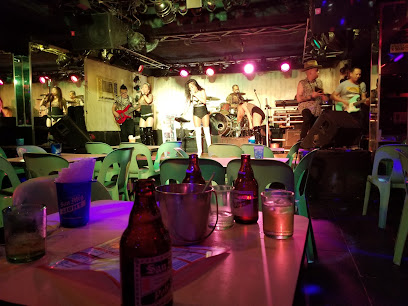
Tapsilog Avenue Bar
Explore the lively nightlife and indulge in local flavors at Tapsilog Avenue Bar in Laoag City, a must-visit for every traveler.

Mansu Bar & Chill
Discover the perfect blend of relaxation and local culture at Mansu Bar & Chill in Laoag City, Ilocos Norte.
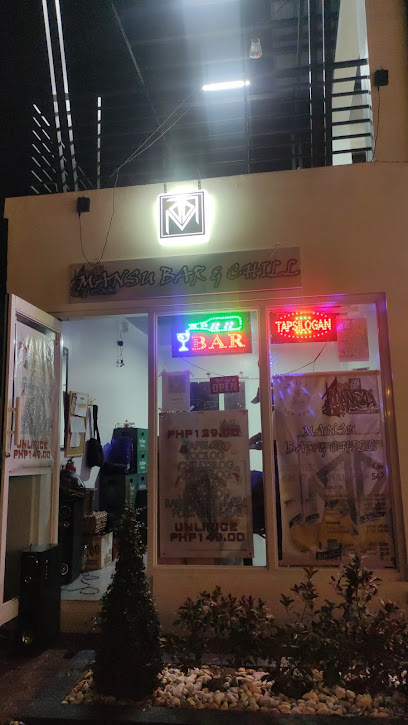
Aloha Resto-Bar Refreshment Hub
Experience the vibrant atmosphere and refreshing drinks at Aloha Resto-Bar Refreshment Hub in Laoag City, the perfect night out for tourists.
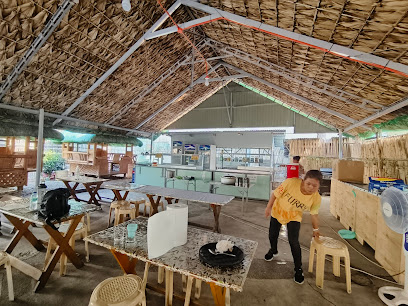
HEBROS
Discover HEBROS Bar: A lively Laog City destination for cocktails, local brews, and unforgettable nightlife experiences.

Pares,Shot!Bar
Discover the lively atmosphere of Pares, Shot! Bar in Laoag City, where vibrant nightlife and local culture come together for an unforgettable experience.

Fae Fae Laoag Ilocos Norte
Savor the authentic tastes of Filipino cuisine at Fae Fae Laoag, a grill haven in the vibrant Laoag City, Ilocos Norte.

jLos Grill and Restobar
Experience the authentic taste of Ilocos at jLos Grill and Restobar, where grilled specialties and a vibrant atmosphere await every food lover.

Bottle Ground Tavern
Savor the authentic taste of Ilocos at Bottle Ground Tavern, where every meal is a celebration of flavors in a vibrant atmosphere.

Bartech bar
Experience the vibrant nightlife at Bartech Bar in Laoag City, where delightful drinks and great company await in the heart of Discolandia.
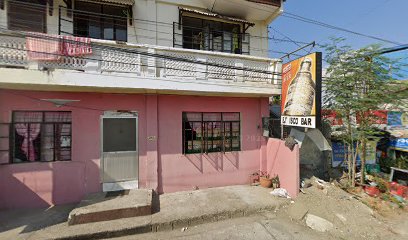
Local Phrases
-
- HelloKamusta
[kah-mus-ta] - GoodbyePaalam
[pah-ah-lam] - YesOo
[oh-oh] - NoHindi
[hin-dee] - Please/You're welcomePaki
[pah-kee] - Thank youSalamat
[sa-la-mat] - Excuse me/SorryPasensya
[pah-sen-sya] - How are you?Kumusta ka?
[koo-mus-ta kah] - Fine. And you?Maayos. Ikaw?
[mah-ah-yos. ee-kahw] - Do you speak English?Nagsasalita ka ba ng Ingles?
[nag-sa-sa-lee-tah kah bah ng een-gles] - I don't understandHindi ko maintindihan
[hin-dee koh main-tin-di-han]
- HelloKamusta
-
- I'd like to see the menu, pleaseGusto ko sanang makita ang menu, pakiusap
[goos-toh koh sa-nang ma-kee-tah ahng meh-noo, pah-kee-oo-sap] - I don't eat meatHindi ako kumakain ng karne
[hin-dee ah-koh koo-ma-ka-een ng kar-neh] - Cheers!Tagay!
[tah-gai] - I would like to pay, pleaseGusto ko sanang magbayad, pakiusap
[goos-toh koh sa-nang mag-ba-yad, pah-kee-oo-sap]
- I'd like to see the menu, pleaseGusto ko sanang makita ang menu, pakiusap
-
- Help!Tulong!
[too-long] - Go away!Lumayo ka!
[loo-ma-yo kah] - Call the Police!Tawag sa pulis!
[ta-wag sa poo-lis] - Call a doctor!Tawag sa doktor!
[ta-wag sa dok-tor] - I'm lostNawawala ako
[na-wa-wa-la ah-koh] - I'm illMay sakit ako
[mahy sa-keet ah-koh]
- Help!Tulong!
-
- I'd like to buy...Gusto ko bumili ng...
[goos-toh koh boo-mee-lee ng] - I'm just lookingNagmamasid lang ako
[nag-ma-ma-seed lang ah-koh] - How much is it?Magkano ito?
[mag-kah-no ee-toh] - That's too expensiveMasyadong mahal iyon
[mas-ya-dong ma-hal ee-yon] - Can you lower the price?Pwede bang babaan ang presyo?
[pweh-deh bahng ba-ba-ahn ahng pre-syo]
- I'd like to buy...Gusto ko bumili ng...
-
- What time is it?Anong oras na?
[ah-nong oh-ras nah] - It's one o'clockAlas uno na
[ah-las oo-no nah] - Half past (10)Kalahating (sampu)
[ka-la-ha-ting sam-poo] - MorningUmaga
[oo-mah-gah] - AfternoonHapon
[ha-pon] - EveningGabi
[gah-bee] - YesterdayKahapon
[ka-ha-pon] - TodayNgayon
[ngai-yon] - TomorrowBukas
[boo-kas] - 1Isa
[ee-sah] - 2Dalawa
[da-la-wa] - 3Tatlo
[ta-tlo] - 4Apat
[ah-pat] - 5Lima
[lee-ma] - 6Anim
[a-neem] - 7Pito
[pee-to] - 8Walo
[wah-lo] - 9Siyam
[see-yam] - 10Sampu
[sam-poo]
- What time is it?Anong oras na?
-
- Where's a/the...?Nasaan ang...?
[nah-sahn ahng] - What's the address?Anong address?
[ah-nong ad-dres] - Can you show me (on the map)?Pwede mo ba akong ipakita (sa mapa)?
[pweh-deh moh bah ah-kohng ee-pa-kee-tah sa mah-pah] - When's the next (bus)?Kailan ang susunod na (bus)?
[kahy-lan ahng soo-soo-nod nah] - A ticket (to ....)Isang ticket (papunta sa ....)
[ee-sahng ticket (pah-poon-tah sa)]
- Where's a/the...?Nasaan ang...?
History of Laoag City
-
Laoag City, originally known as 'Laoag', has its roots in the pre-colonial period when it was inhabited by the Ilocano people. With the arrival of Spanish colonizers in the 16th century, Laoag became a significant settlement in the region. In 1580, it was established as a pueblo, making it one of the oldest towns in the Ilocos region. The Spanish influence is evident in the architecture and local customs that persist to this day.
-
During the 19th century, Laoag became a crucial center for the tobacco industry in the Philippines. The tobacco monopoly established by the Spanish government significantly impacted the local economy, leading to the prosperity of Laoag and its surrounding areas. This industry attracted many migrants and influenced the cultural landscape, shaping both the economy and the social fabric of the community.
-
Laoag, like many parts of the Philippines, was affected by World War II. The city was occupied by Japanese forces from 1942 to 1945, leading to significant hardships for the local population. The resistance movements during this time played a crucial role in the eventual liberation of the city. The war left lasting scars, but it also fostered a spirit of resilience among the residents.
-
Following the liberation from Japanese occupation, Laoag underwent significant reconstruction. The city began to modernize in the 1950s and 1960s, with infrastructure improvements and the establishment of educational institutions. The growth of the local economy continued, with agriculture and trade playing vital roles in the city's development.
-
Laoag City is renowned for its rich cultural heritage, which includes well-preserved Spanish-era churches such as the St. William's Cathedral and the Sinking Bell Tower. The city celebrates various festivals, including the Pamulinawen Festival, honoring St. William, the patron saint of Laoag. This vibrant celebration reflects the deep-rooted traditions and the unique identity of the Ilocano people, showcasing their artistry, cuisine, and community spirit.
Laoag City Essentials
-
Laoag City is accessible via Laoag International Airport, which offers domestic flights from Manila and Cebu. From Manila, travelers can also take a bus; several companies operate daily services that take approximately 10-12 hours. For those already in Ilocos Norte, local buses connect Laoag to nearby towns such as Vigan and Batac, making it convenient to explore the region.
-
In Laoag City, public transportation includes jeepneys, tricycles, and taxis, which are affordable and readily available. Jeepneys are a popular choice for short distances, while tricycles can be hired for more localized travel. Walking is also an option in the city center, where many attractions are located within close proximity. Bicycles can be rented for a more leisurely exploration of the area.
-
Laoag City is generally safe for tourists, but it is wise to remain vigilant, especially in crowded areas. Petty crimes like pickpocketing can occur. Avoid walking alone in dimly lit areas at night, particularly around the outskirts of the city. Specific areas like the outskirts of the Laoag City Plaza should be approached with caution after dark.
-
In case of emergencies, dial 911 for police, fire, or ambulance services. For medical emergencies, visit the nearest hospital, such as the Laoag Medical Center. It is advisable to have travel insurance that covers emergencies. Pharmacies are available throughout the city for minor health issues.
-
Fashion: Do wear light, breathable clothing suitable for the warm climate. When visiting churches, dress modestly. Religion: Do respect local customs, especially during religious events. Public Transport: Do give way to elders and be courteous. Don’t engage in loud conversations on public transport. Greetings: Do greet locals with a smile and a friendly 'Hello'. Eating & Drinking: Do try local specialties like empanada and longganisa. Don't waste food or refuse hospitality when offered.
-
To experience Laoag City like a local, visit the bustling Laoag City Market for fresh produce and local delicacies. Engage with friendly locals who are often keen to share stories about their culture. Take time to explore historical sites like the Sinking Bell Tower and Paoay Church, a UNESCO World Heritage site. For a unique experience, try to catch a local festival, which showcases the vibrant culture of Ilocos Norte.
Nearby Cities to Laoag City
-
Things To Do in Vigan
-
Things To Do in Sagada
-
Things To Do in Baguio
-
Things To Do in Batanes
-
Things To Do in Angeles City
-
Things To Do in Subic
-
Things To Do in Manila
-
Things To Do in Tagaytay
-
Things To Do in Legazpi
-
Things To Do in Boracay
-
Things To Do in Cebu City
-
Things To Do in Puerto Princesa
-
Things To Do in Palawan
-
Things To Do in Bohol
-
Things To Do in Camiguin










